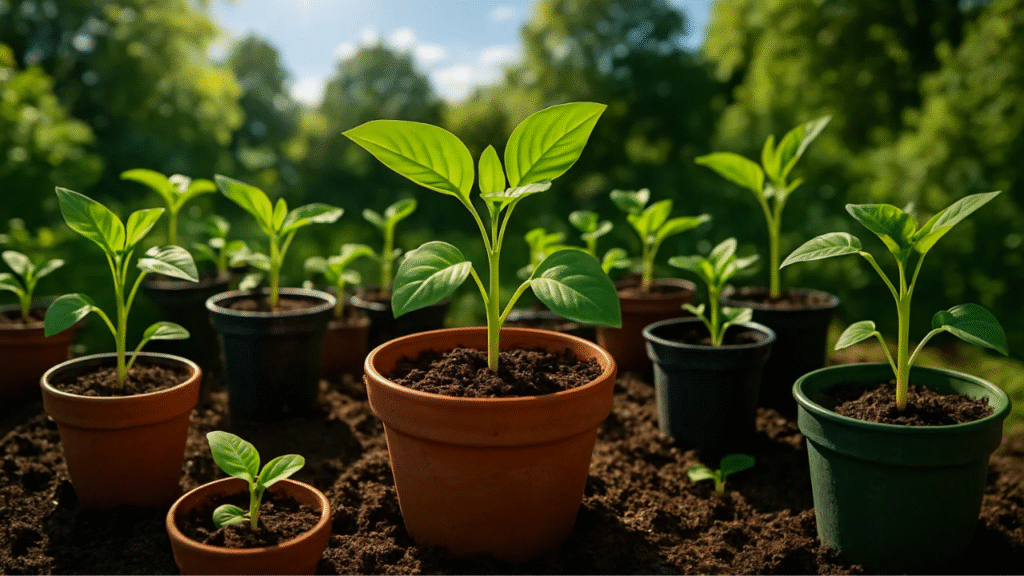
Optimal Light Hours for Seedlings: A Complete Guide for Healthy Growth
If you’re growing seedlings, you already know that providing the right care is essential for their success. But did you know that one of the most important factors in ensuring your seedlings thrive is getting the optimal light hours for seedlings? 🌞 Whether you’re a seasoned gardener or a first-time grower, understanding the right amount of light your seedlings need can make all the difference in their development. In this guide, we’ll walk you through the critical light requirements for seedlings, helping you create the perfect environment for healthy, strong plants. 🌿 Let’s dive in and unlock the secret to growing your best seedlings yet! 🌸
Table of Contents
Toggle🌱 Understanding Seedling Light Needs 🌱
Seedlings are delicate and require specific light conditions to grow strong and healthy. Unlike mature plants, they’re still developing their roots and leaves, which means they need light to fuel their growth but not too much to overwhelm them. 🌞
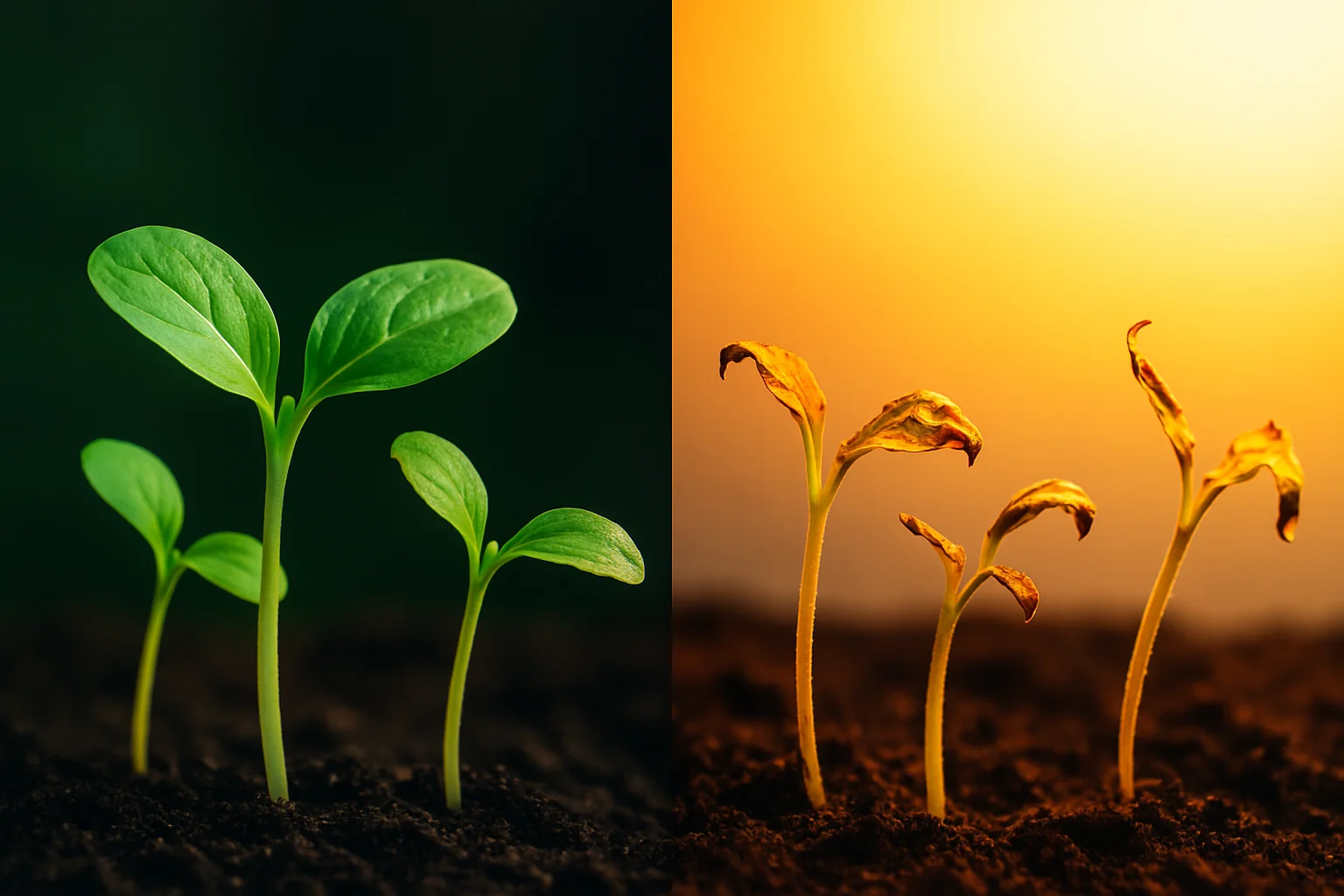
Light helps seedlings perform photosynthesis, the process they use to make food and energy. 🌞 Without it, seedlings can’t thrive. But it’s not just about the amount of light – it’s also about quality! Different wavelengths of light affect how seedlings grow. Blue light encourages leafy growth, while red light helps with flowering and fruiting. 🌸
Remember, seedlings need 12-16 hours of light per day, but that can vary depending on the type of plant. Too little light can cause them to become leggy and weak, stretching toward the light source. 😔 On the other hand, too much light, especially from artificial sources, can cause burning or stunted growth. Finding that perfect balance is key! 🌟
By understanding these light needs, you can set up the ideal environment to support your seedlings as they grow into strong, healthy plants! 🌿
⏳ The Importance of Proper Light Duration ⏳
Proper light duration is crucial for your seedlings’ growth, as it directly affects their ability to photosynthesize and develop properly. 🌞 Seedlings follow a natural rhythm, called the photoperiod, where they need a certain amount of light each day to thrive. Too much or too little light can disrupt this cycle and lead to poor growth.
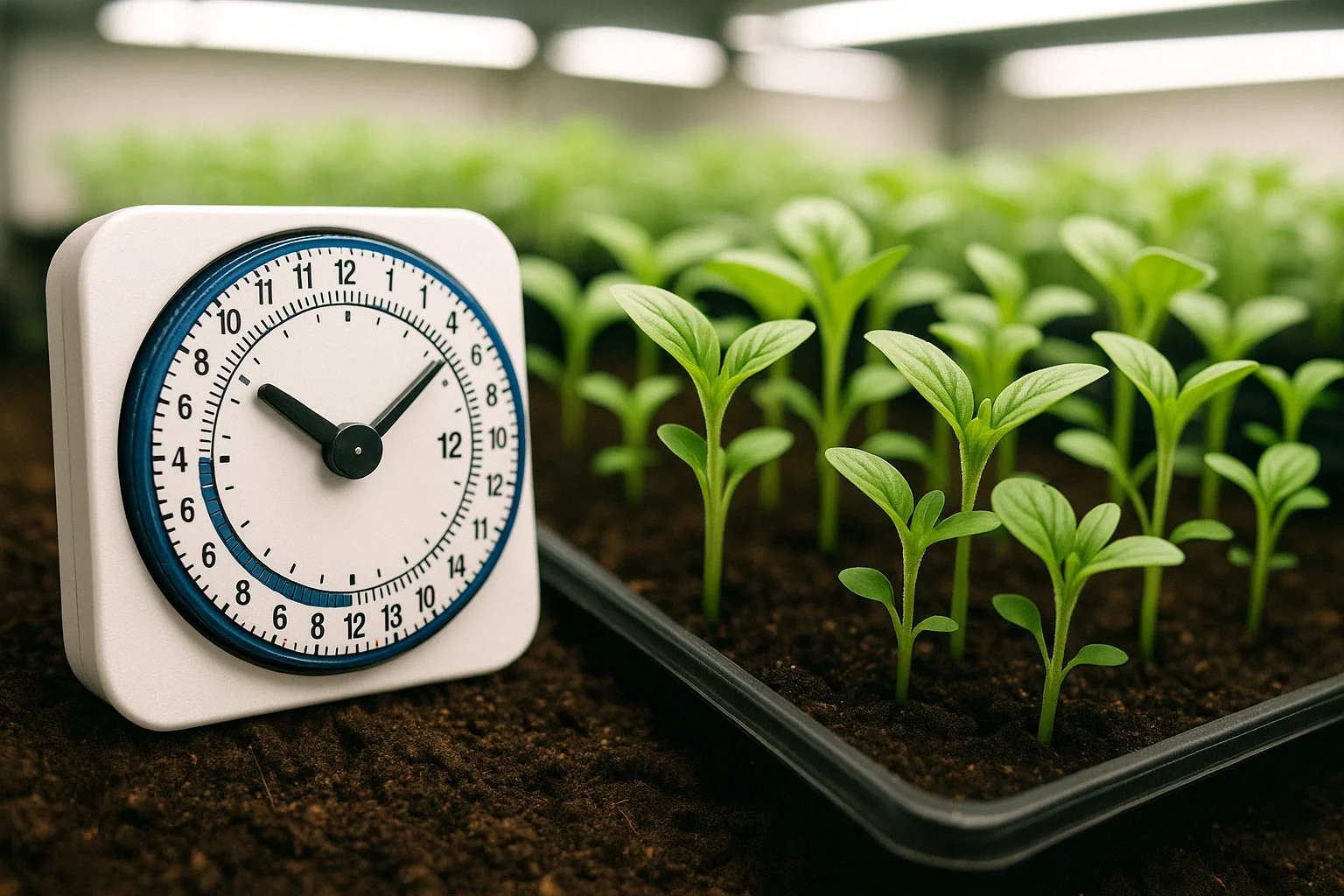
Generally, seedlings need about 12 to 16 hours of light per day, but the duration can vary based on the type of plant. 🌿 For example, leafy greens like lettuce may need a bit less, while other plants like tomatoes thrive with longer light exposure. It’s important to mimic natural sunlight by providing enough light during the day and allowing them a restful dark period at night for healthy growth. 🌙
If seedlings don’t get enough light, they’ll become etiolated, meaning they’ll stretch and become weak in search of light. On the flip side, too much light can cause burnout and hinder their development. Striking the right balance of light duration is key for giving your seedlings the best start! ✨
⏰ How Many Light Hours Do Seedlings Need? ⏰
The number of light hours your seedlings need depends on their type and growth stage, but there are general guidelines to follow for healthy development. Most seedlings thrive with 12-16 hours of light each day, but this can vary slightly based on the plant species. 🌱
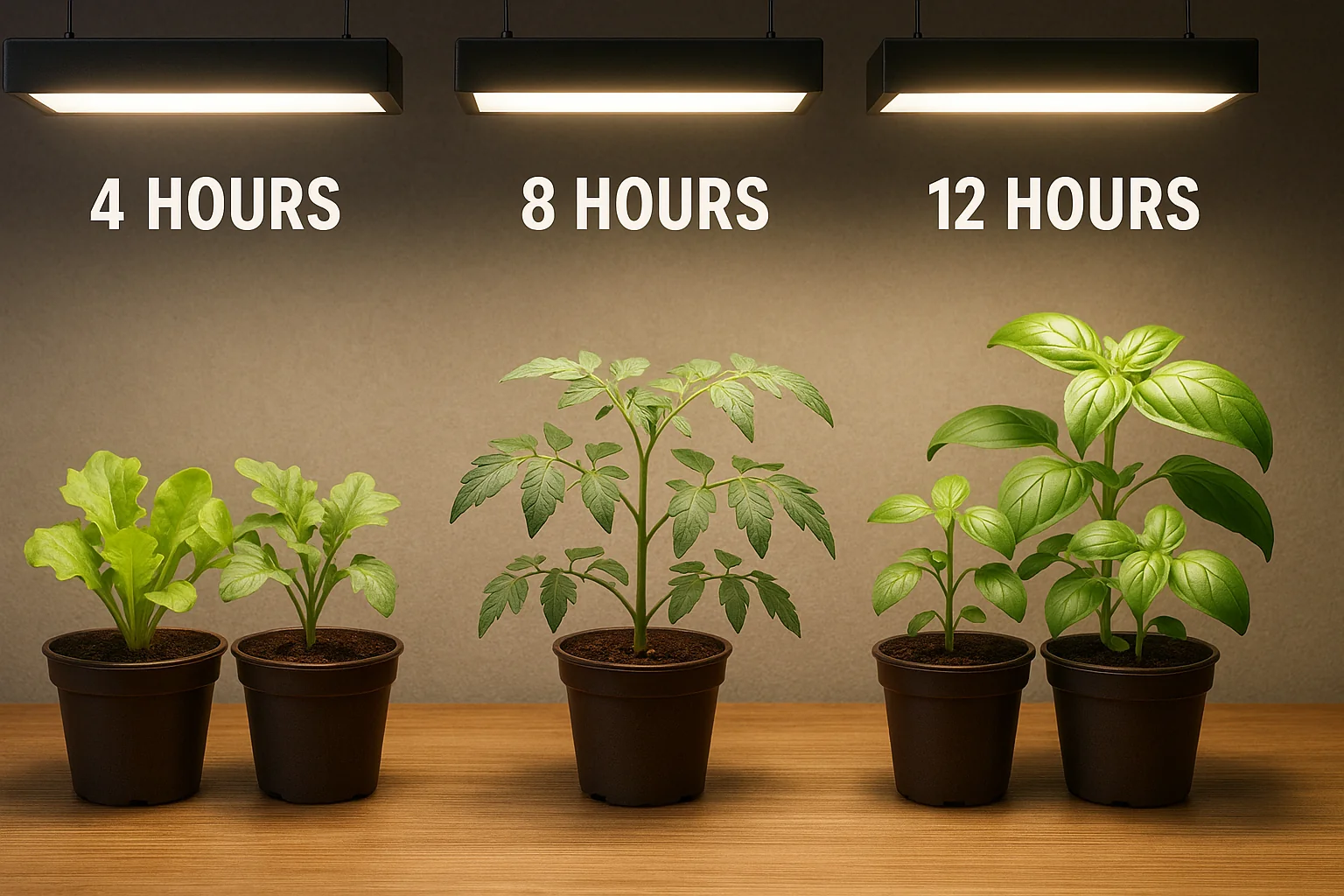
- Leafy Greens (like lettuce, spinach): These plants usually do well with around 12-14 hours of light daily. They don’t need intense light for long periods.
- Fruit-Bearing Plants (like tomatoes, peppers): These seedlings require 14-16 hours of light to grow strong and productive. They benefit from longer light exposure, especially during their early stages.
- Herbs (like basil, cilantro): Around 12-14 hours of light works well for most herb seedlings.
While light hours are important, it’s also crucial to consider the light intensity. If you’re growing indoors with artificial lights, you may need to adjust the light exposure to ensure your seedlings are getting the right amount of energy to thrive. 🌞
Remember, consistency is key! Regular light exposure, combined with the right hours, will help your seedlings grow strong and healthy. 🌟
🌈 Light Quality: More Than Just Duration 🌈
While the duration of light is important, the quality of light is just as crucial for your seedlings’ growth. 🌿 Not all light is created equal, and seedlings thrive when they get the right type of light at the right intensity. Here’s what you need to know:
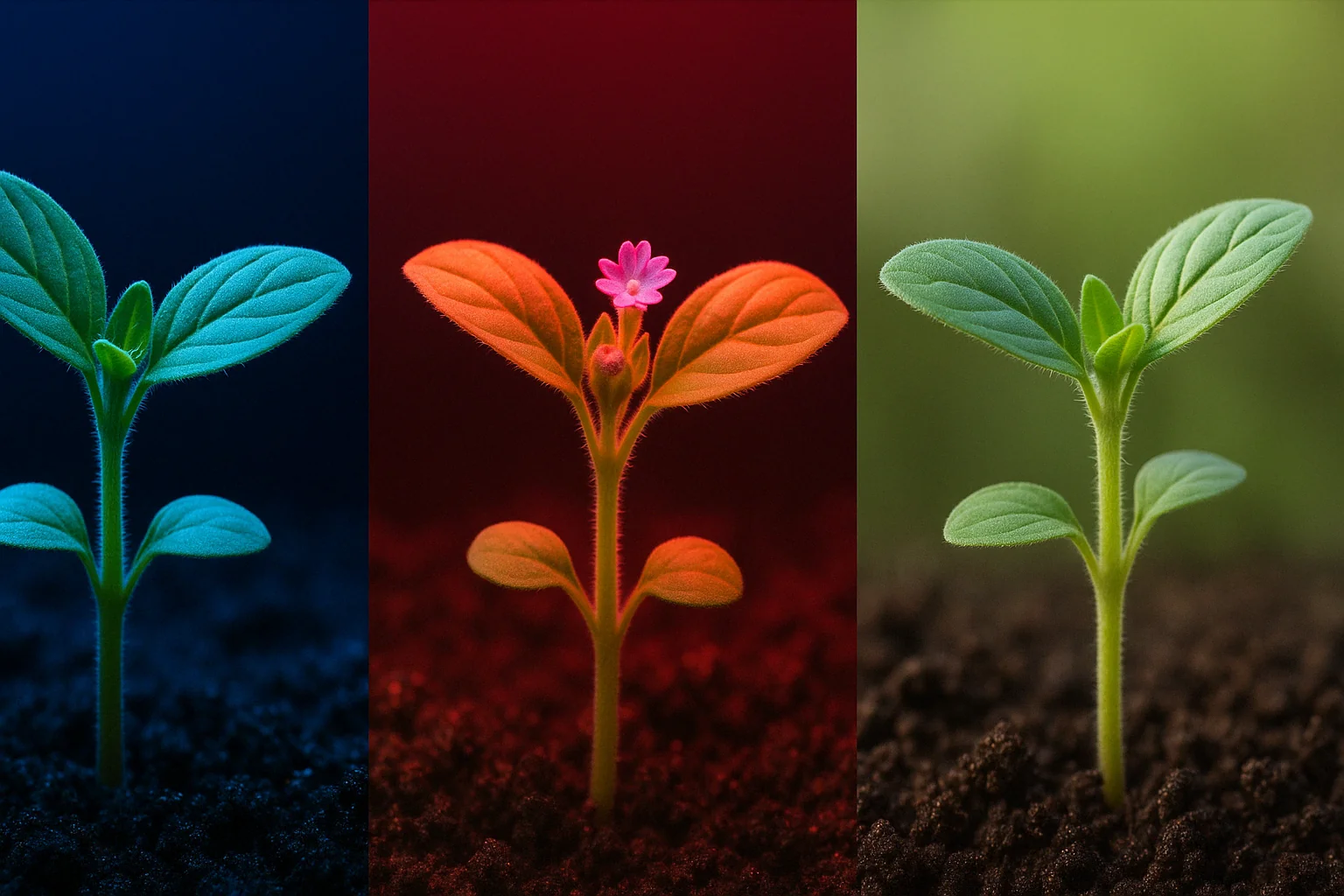
- Full Spectrum Light: Seedlings need light that mimics natural sunlight. Full spectrum light provides a balanced mix of all light wavelengths—blue, red, and everything in between—which promotes healthy growth from roots to leaves. 🌞
- Blue Light: Blue light is vital for leafy growth and helps seedlings develop strong stems and healthy leaves. 🌱 If you want your seedlings to grow tall and strong, blue light is a must!
- Red Light: Red light supports flowering and fruiting in plants. If you plan to transplant your seedlings into your garden later, a bit more red light can help them transition smoothly. 🍅
- Light Intensity: The brightness of the light matters too. Too little intensity will cause your seedlings to become leggy, while too much can cause burning. Aim for a balance that promotes healthy growth. 🌟
When setting up lights for your seedlings, whether natural or artificial, ensure they’re getting a full spectrum of light to thrive! 🌞
⚠️ Signs of Light Stress in Seedlings ⚠️
Light stress can be a major setback for seedlings, and it’s important to recognize the signs early so you can adjust their light conditions. Here’s how to spot when your seedlings are not getting the right amount of light:
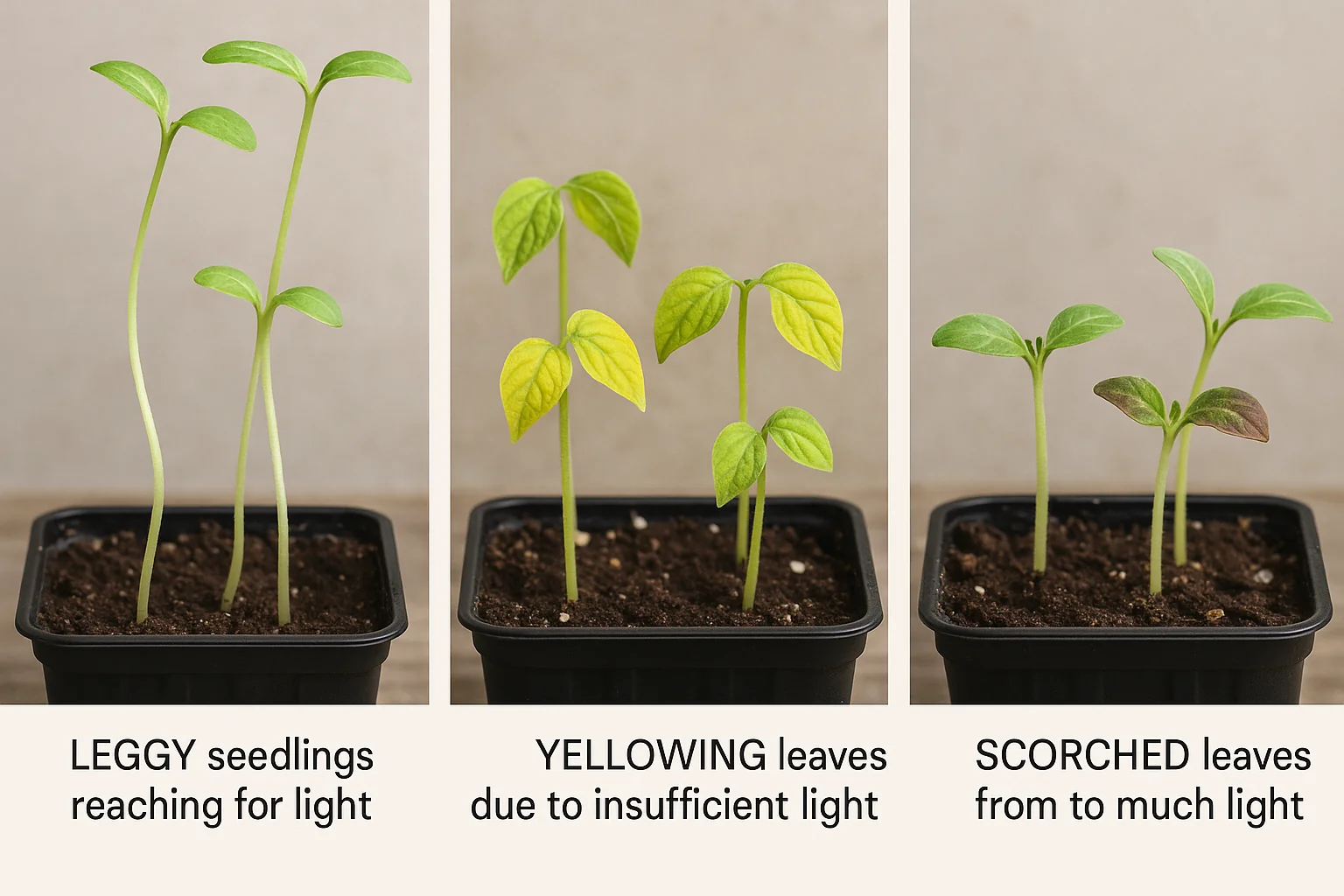
- Leggy Seedlings: If your seedlings are tall, thin, and stretching toward the light, they’re likely not getting enough. This is a sign they’re reaching out for more light, which causes weak, elongated stems. 😟
- Yellowing Leaves: Insufficient light can cause chlorosis, where leaves turn yellow due to a lack of photosynthesis. This is a sign that your seedlings are struggling to make enough energy. 🌿
- Burned or Scorched Leaves: If seedlings are exposed to too much light—especially from artificial sources—they can develop burnt or crispy leaves. This can happen if the light intensity is too high or the seedlings are too close to the light source. 🔥
- Slow Growth: Seedlings that aren’t receiving the proper light may exhibit stunted or slow growth. If they seem to stop growing or grow very slowly, light stress could be the cause. ⏳
- Curling Leaves: Too much light can cause leaves to curl and become dry. This is another sign that the seedlings are receiving more light than they can handle. 🌞
If you spot any of these signs, adjust your light exposure by either increasing or decreasing the duration or intensity to help your seedlings bounce back! 🌱
💡 How to Provide the Right Light for Your Seedlings 💡
Providing the right light for your seedlings is essential for strong, healthy growth. Here’s how you can create the perfect lighting setup for your little plants:
For Indoor Seedlings:
- Use Grow Lights: If natural sunlight is insufficient, invest in LED or fluorescent grow lights. These mimic the full spectrum of sunlight and are great for indoor environments. 🌟
- Adjust the Distance: Place your grow lights about 6-12 inches above the seedlings. If they’re too close, it could cause light burn; too far, and they might not get enough intensity. 📏
- Use Timers: Set a timer to ensure your seedlings get 12-16 hours of light each day, followed by a dark period for proper growth. ⏰
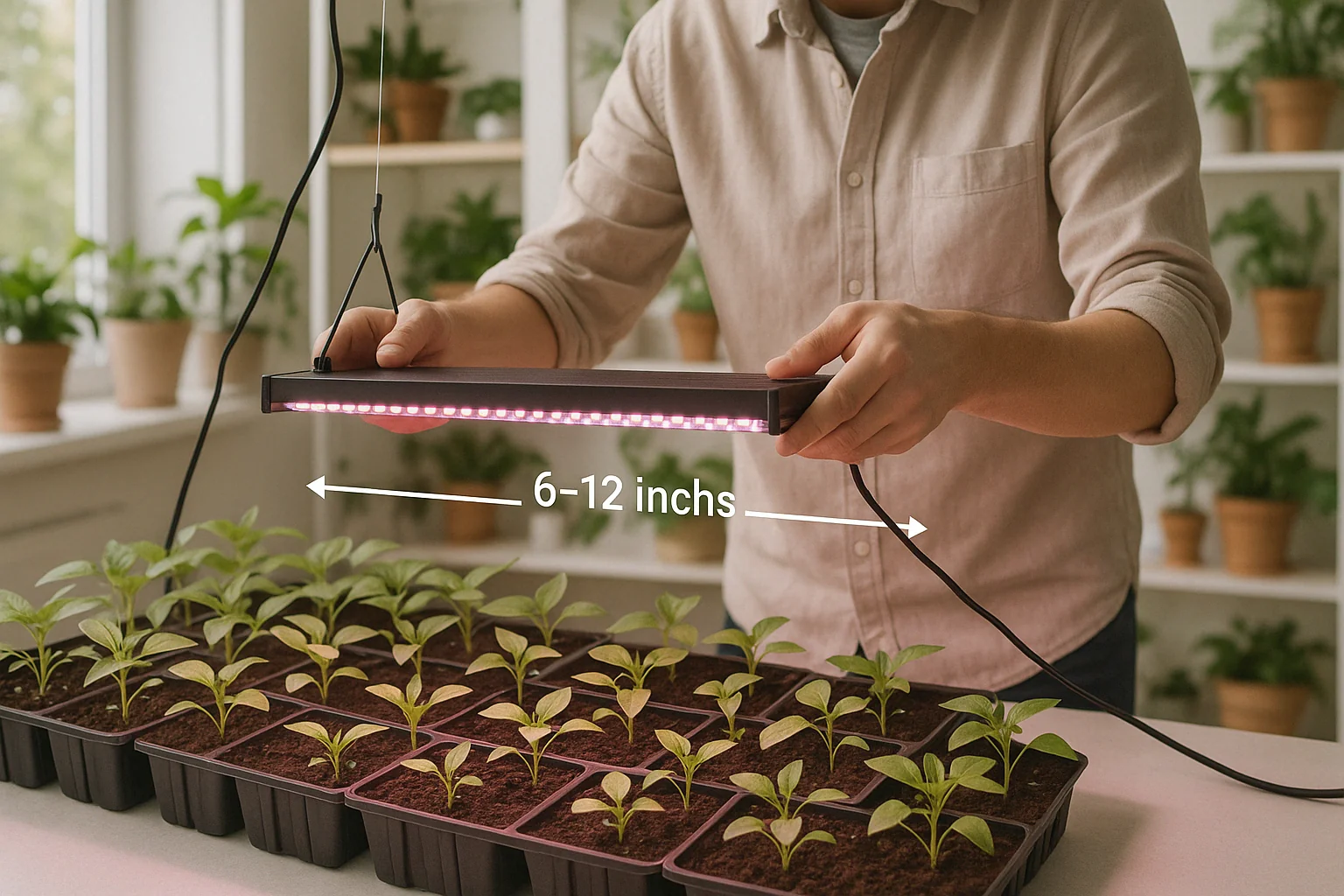
For Outdoor Seedlings:
- Maximize Sunlight Exposure: Place your seedlings in a location where they get direct sunlight for at least 4-6 hours a day. If it’s too hot, try to find a spot with partial shade to protect them from burning. 🌞
- Rotate Plants Regularly: Seedlings can become unevenly lit if left in one position too long. Rotate your pots regularly to ensure all sides of the plants get even light. 🔄
- Consider Natural Light: If you’re growing seedlings near windows, try to place them where they’ll get direct sunlight. East-facing windows work best for morning light, while south-facing windows provide the most consistent sunlight throughout the day. 🪟
By providing the right light setup, you’ll help your seedlings grow strong and ready for their next growth phase! 🌿
🌱 Adjusting Light for Different Growth Stages 🌱
As your seedlings grow, their light needs will change. Adjusting the light conditions at different stages of growth is essential for healthy development. Here’s how to tweak light exposure to match their needs:
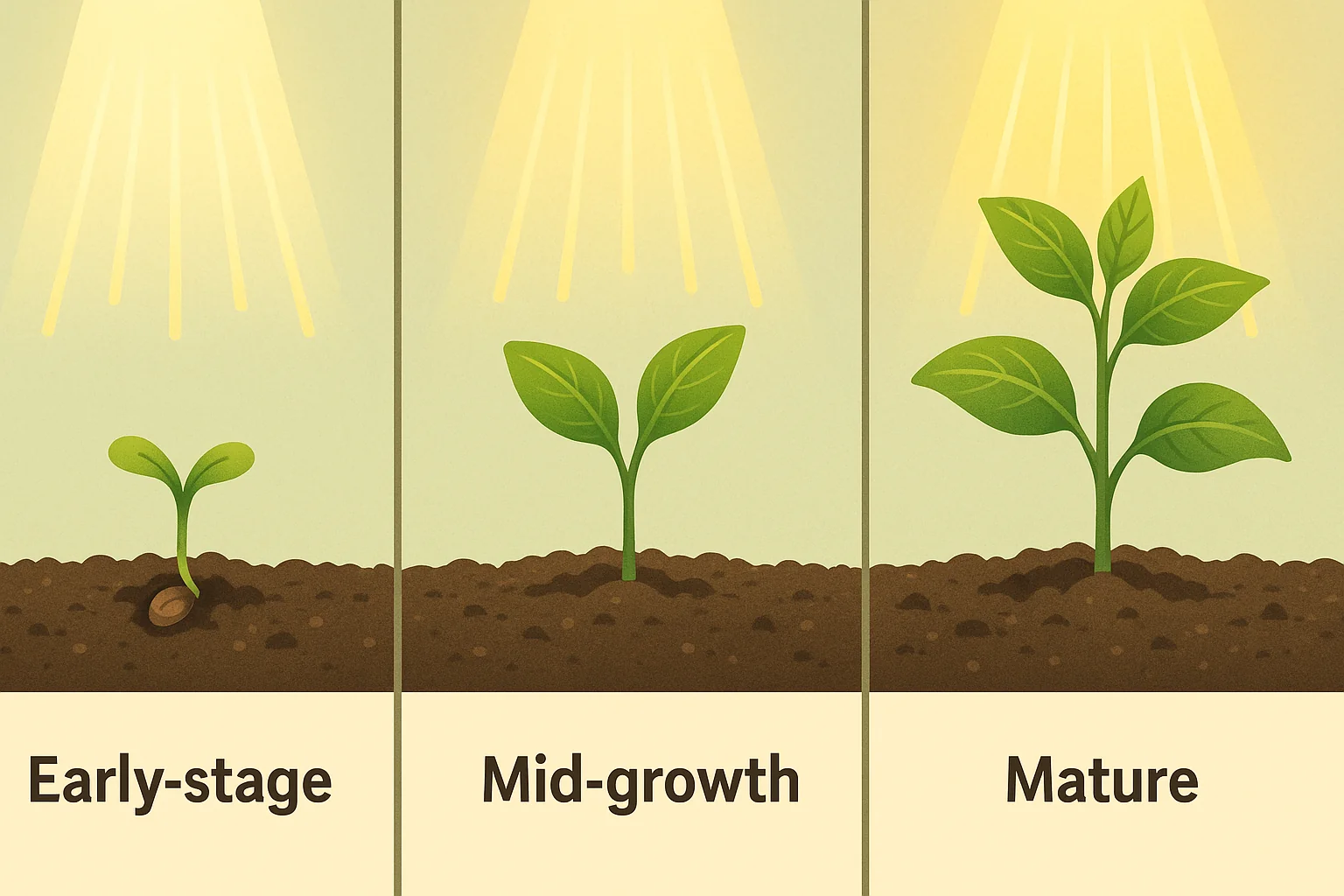
- Early Stage (Germination to Sprouting):
In the early stages, your seedlings need gentle, consistent light. They typically need around 12-14 hours of light daily. Too much intense light can stress them, so if you’re using artificial lights, keep the intensity moderate. 🌿 - Mid-Growth Stage (Developing Leaves):
As your seedlings start to grow more leaves, they need stronger light to fuel photosynthesis. At this stage, increase light duration to 14-16 hours if possible. Seedlings will benefit from higher light intensity to support their growing leaves and stems. 🌞 - Mature Stage (Ready for Transplanting):
As seedlings near transplanting, gradually reduce light exposure to help them acclimate to outdoor conditions. This process, called hardening off, helps seedlings adjust to natural sunlight without shock. Reduce light to about 12 hours a day for a week before transplanting. 🌻
Adjusting light according to your seedlings’ growth stage will ensure they develop strong, sturdy roots, leaves, and stems. Make sure to closely observe them as they grow to find the perfect light balance! 🌟
⚠️ Common Mistakes to Avoid ⚠️
When it comes to providing the right light for seedlings, it’s easy to make mistakes that can affect their growth. Here are some common missteps to watch out for and tips on how to avoid them:
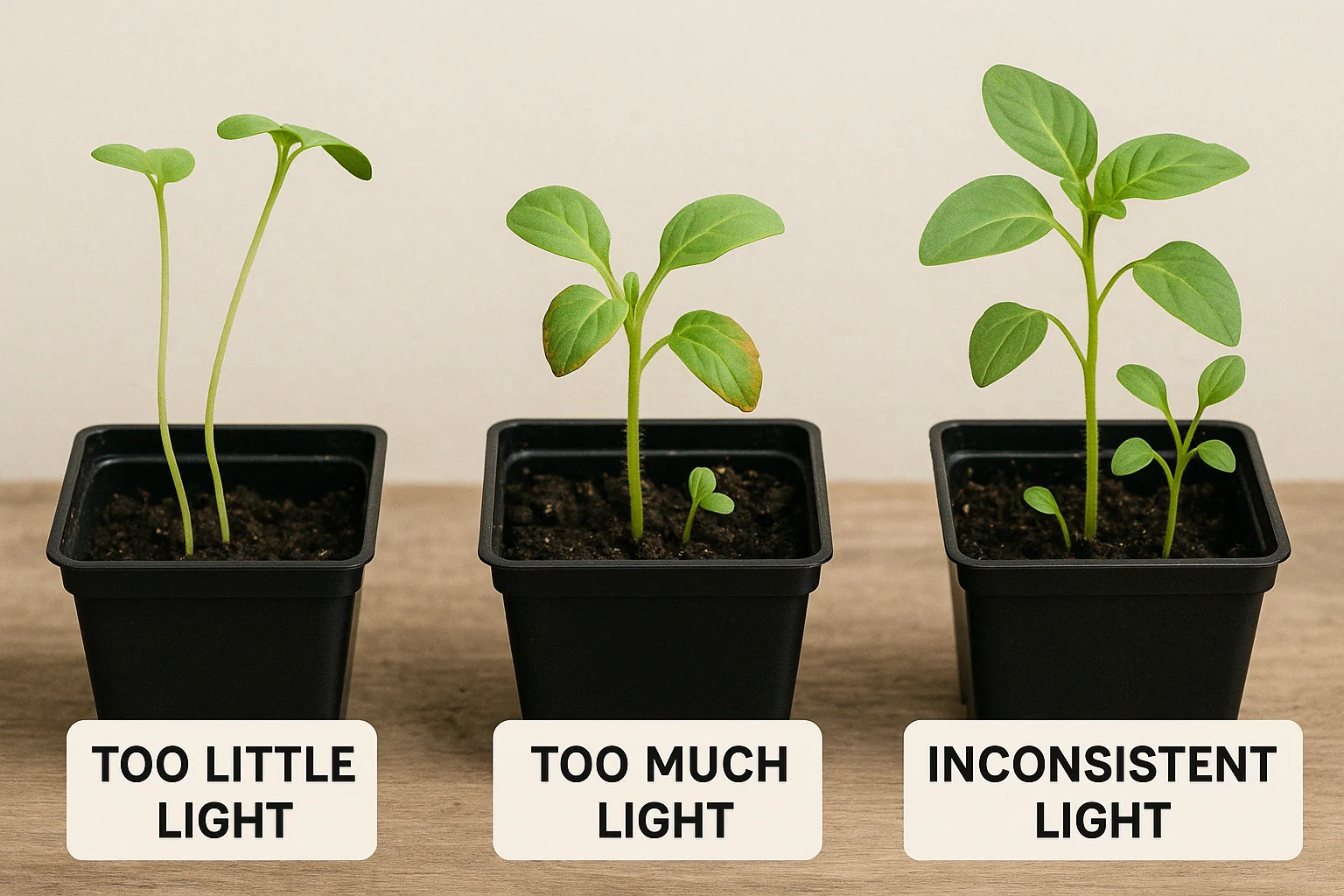
- Too Little Light:
One of the biggest mistakes is not giving seedlings enough light. If they’re not getting at least 12-14 hours of light, they can become leggy and weak as they stretch for more light. Ensure your seedlings get consistent light throughout the day! 🌱 - Too Much Light:
Overexposure to light, especially from artificial sources, can lead to burned leaves or stunted growth. Keep the light intensity at a comfortable level and make sure it’s not too close to your seedlings. 💡 - Ignoring Light Quality:
Not all light is equal! Relying only on basic light bulbs instead of full-spectrum grow lights can limit your seedlings’ growth. Full-spectrum lights provide the right balance of blue and red light, which is essential for healthy growth. 🌞 - Not Adjusting for Growth Stages:
Seedlings’ light needs change as they grow. If you don’t adjust light duration and intensity as your seedlings mature, they may not develop properly. Remember to gradually increase light exposure as they move from germination to transplanting. 🌿 - Inconsistent Light:
Seedlings thrive on a consistent light schedule. Avoid moving them around too often or changing light exposure. If you’re using grow lights, use a timer to maintain a consistent light cycle. ⏰
By avoiding these mistakes, you’ll help your seedlings grow strong and healthy, setting them up for a successful transplant into your garden or larger pots! 🌟
🌿 Final Thought 🌿
In conclusion, providing the optimal light hours for seedlings is essential for their healthy growth and development. By understanding the balance of light duration, intensity, and quality, you can ensure your seedlings thrive from germination to transplant. 🌞 Whether you’re growing indoors or outdoors, adjusting your light setup according to your seedlings’ needs at each growth stage will set them up for success.
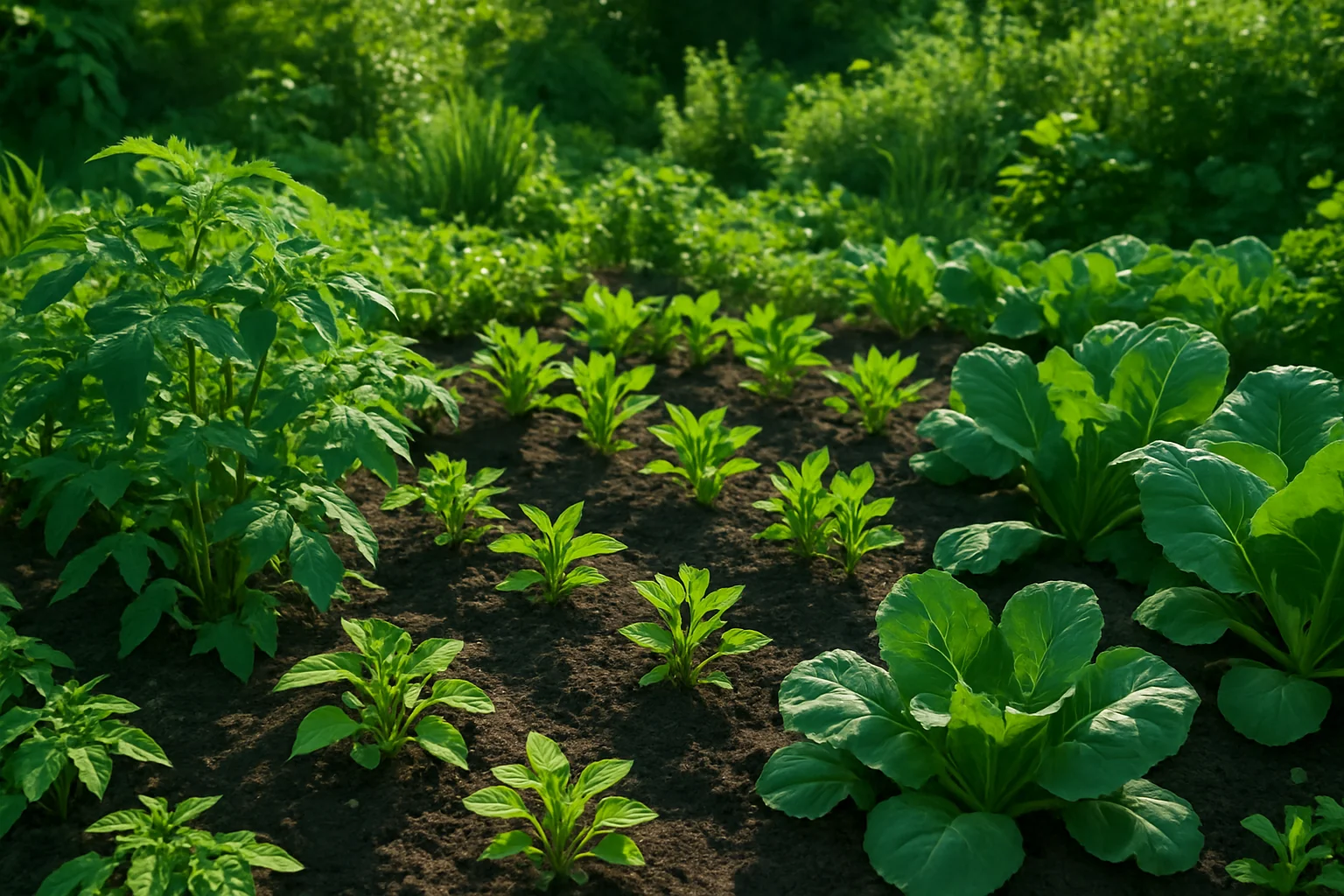
Remember, consistency is key! Keep a close eye on your seedlings, adjust light as necessary, and avoid common mistakes to help them grow strong, healthy, and ready for the next phase. With the right light, your seedlings will become vibrant plants, ready to flourish in your garden or home. 🌸 Happy gardening! 🌱
Frequently Asked Questions (FAQ)
How many hours of light do seedlings need each day?
Seedlings generally need about 12-16 hours of light per day. The exact amount can vary depending on the plant type, with leafy greens needing a bit less light (around 12-14 hours) and fruit-bearing plants needing more (up to 16 hours). 🌞
Can seedlings get too much light?
Yes, seedlings can get light burn if exposed to too much light, especially from artificial sources. If the light is too intense or too close, you might notice crispy or scorched leaves. Make sure to adjust the light intensity and distance to avoid this. 🔥
What is the best type of light for seedlings?
Full-spectrum light is best for seedlings as it mimics natural sunlight. This type of light provides the right balance of wavelengths (blue for leafy growth and red for flowering/fruiting). If using artificial lights, go for LED or fluorescent grow lights. 🌈
How do I know if my seedlings aren't getting enough light?
If your seedlings are stretching toward the light, growing leggy or weak, or their leaves are yellowing, it’s a sign they aren’t getting enough light. Increase light duration and consider using grow lights to support healthy growth. 🌿
Should I adjust light as seedlings grow?
Yes! As your seedlings mature, their light needs change. Early-stage seedlings need about 12-14 hours of light, while more established seedlings require 14-16 hours. Gradually reduce light exposure when they’re getting ready for transplanting to avoid shock. 🌻
Can seedlings grow without natural sunlight?
Yes! You can grow seedlings indoors with artificial grow lights if they don’t receive enough natural sunlight. Just make sure to provide the correct light duration and spectrum for their development. 🌟
How can I provide the right light for outdoor seedlings?
For outdoor seedlings, place them in a spot that gets direct sunlight for at least 4-6 hours a day. Rotate the seedlings regularly to ensure they get even light and avoid too much heat or burning. ☀️
What should I do if my seedlings are becoming leggy?
Leggy seedlings are often a sign of insufficient light. Ensure they get enough light (12-16 hours per day) and adjust the light source to be closer (without burning them). You can also consider using a grow light to boost light intensity. 🌱
